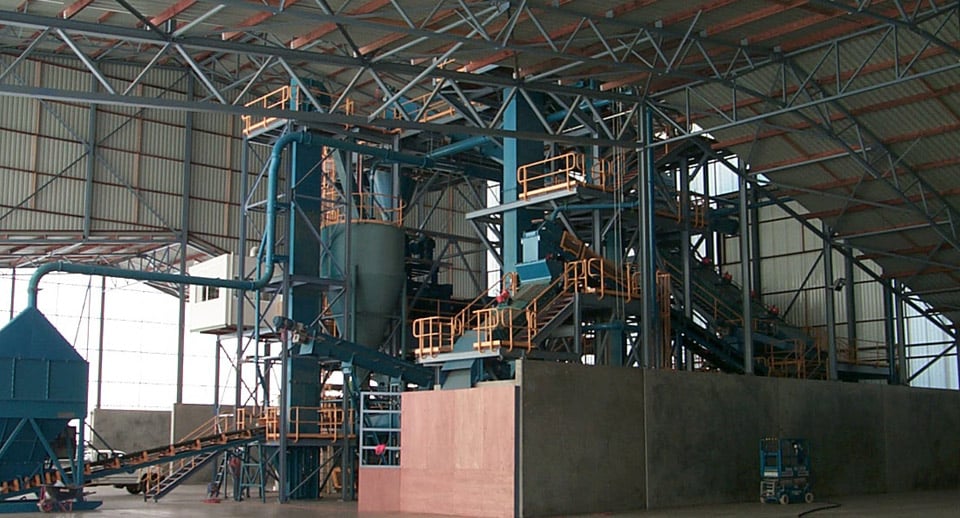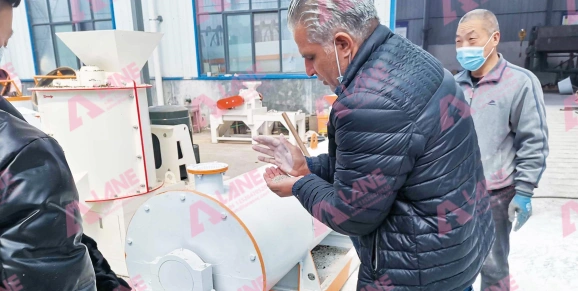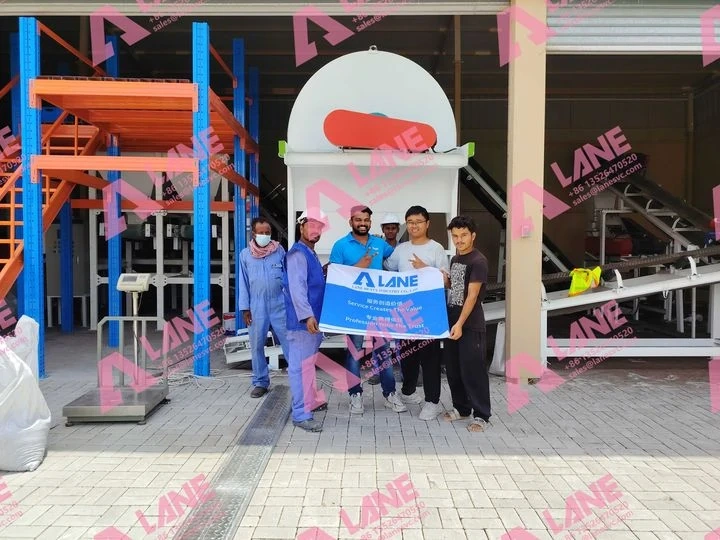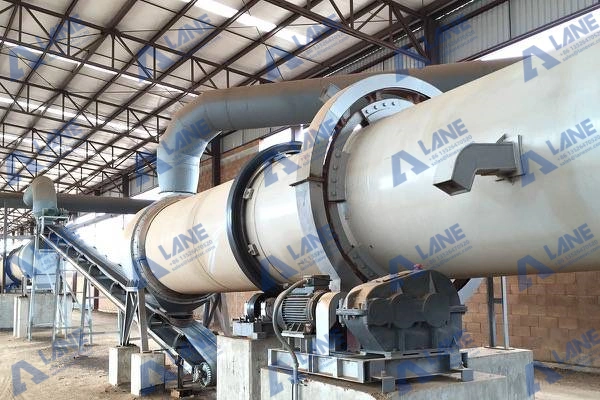single superphosphate (SSP)
- 2025-02-05
Single superphosphate (SSP), as an important phosphate fertilizer, plays a key role in agricultural production. With the development of global agriculture and the increasing attention to food security, the dynamics of the SSP market have attracted much attention. This article will conduct a comprehensive analysis of the global SSP market in the next five years, covering market size, production and consumption patterns, application areas, and production equipment.

In the past few years, the global single superphosphate (SSP) market has shown a certain development trend. According to relevant data forecasts, the global SSP market is expected to continue to grow in the next five years. From the perspective of production capacity, it is expected that the global SSP production capacity will gradually increase to meet the growing market demand. In terms of output, with the advancement of technology and the commissioning of new production facilities, the output will also increase steadily. The apparent consumption and market demand of global SSP will also show an upward trend, especially in emerging agricultural markets.
In terms of price trends, although affected by various factors such as raw material price fluctuations, supply and demand relations, and international market competition, in the long run, with the optimization of production technology and the emergence of economies of scale, prices are expected to remain relatively stable and may decline to a certain extent.
The world’s major single superphosphate (SSP) production regions include the United States, Europe, Japan, China, Southeast Asia and India. The United States occupies an important position in SSP production with its advanced agricultural technology and large-scale agricultural production. European manufacturers focus on product quality and environmental protection standards, and their production technology is relatively mature. As a major agricultural country, China has a huge production and demand for single superphosphate (SSP), and has significantly improved its production technology and capacity in recent years. With the rapid development of agriculture in Southeast Asia and India, the demand for SSP continues to increase, which has also prompted the gradual expansion of local production scale.
Single superphosphate (SSP) is mainly used in cash crops, vegetable planting and other crop planting fields, and plays an indispensable role in different application scenarios.
In cotton planting, the application of single superphosphate (SSP) can promote the growth and development of cotton roots, make the root system more developed, and enhance cotton’s ability to absorb water and nutrients in the soil. Phosphorus helps cotton flower bud differentiation, increase the number of flower bolls, and improve the fruit setting rate of cotton, thereby effectively improving cotton yield and fiber quality. The fiber length and strength are improved, providing better raw materials for the textile industry.
For sugarcane cultivation, the phosphorus element provided by single superphosphate (SSP) can accelerate the sugar accumulation process of sugarcane. Adequate phosphorus nutrition can promote the photosynthesis of sugarcane, make the sugarcane stalks thick, increase the internodes, and increase the sugar content and yield of sugarcane. During the critical period of sugarcane growth, the reasonable application of single superphosphate (SSP) can significantly improve the growth of sugarcane and increase the economic benefits of sugarcane farmers.
In the process of tobacco cultivation, single superphosphate (SSP) not only helps the root growth of tobacco plants, but also improves the stress resistance of tobacco, making it more resistant to adversities such as drought, pests and diseases. Phosphorus can promote the absorption and utilization of other nutrients such as nitrogen and potassium by tobacco plants, coordinate the growth and development of plants, make the tissue structure of tobacco leaves more reasonable, and thus improve the quality of tobacco leaves, such as aroma, color and burning properties.
In vegetable cultivation, single superphosphate (SSP) plays an important role in the growth and quality improvement of vegetables. For leafy vegetables, such as cabbage and lettuce, SSP can promote the growth of leaves, making them thicker and greener, increasing the yield and vitamin content of vegetables, and enhancing the nutritional value of vegetables. In the cultivation of fruiting vegetables, such as tomatoes and cucumbers, phosphorus helps flower bud differentiation and fruit development, improves fruit setting rate, reduces the phenomenon of falling flowers and fruits, and makes the fruit uniform in size, bright in color, and better in taste.
At the same time, SSP can also enhance the ability of vegetables to resist diseases and pests, reduce the use of pesticides, and meet people’s demand for green and healthy food. With the increase in people’s demand for healthy food, the planting area of organic vegetables continues to expand. High-quality SSP can provide organic vegetables with continuous and stable phosphorus nutrition, meet the strict requirements of organic vegetable production for fertilizers, and promote the development of the organic vegetable industry.
In the cultivation of grain crops, such as wheat and rice, single superphosphate (SSP) can promote seed germination and seedling growth, make the root system of the plant well-developed, and enhance the plant’s resistance to lodging. In the later growth stage, phosphorus helps promote the synthesis and transportation of carbohydrates, increase the thousand-grain weight of grain crops, and increase yield. In the cultivation of oil crops, such as soybeans and rapeseed, SSP can promote flower bud differentiation and pod development, increase oil yield, and improve oil quality.
Rotary drum drying equipment is one of the commonly used equipment in the production of single superphosphate (SSP). Its working principle is that after the wet material is put into the dryer from one end, the material is evenly distributed and dispersed in the dryer under the flipping of the evenly distributed scraper in the inner drum, and is fully in contact with the co-current (countercurrent) hot air, which accelerates the driving force of drying heat transfer and mass transfer.
During the drying process, the material can be controlled to move to the other section of the dryer under the action of the inclined scraper and hot air flow to the star discharge valve to discharge the finished product. This equipment is suitable for drying large particles and heavy materials in the chemical, mining, metallurgical and other industries, such as phosphate fertilizer production. It has the advantages of high drying efficiency, large processing capacity, and simple operation, which can effectively improve the production efficiency and product quality of SSP.
In addition to rotary drum drying equipment, single superphosphate (SSP) production also uses reaction equipment for the chemical reaction of sulfuric acid and phosphate rock to generate SSP. These reaction equipment need to have good corrosion resistance and reaction control capabilities to ensure the smooth progress of the reaction and the purity of the product. Crushing equipment is used to crush raw materials such as phosphate rock to achieve a suitable particle size for subsequent reactions and processing. Mixing equipment is used to fully mix various raw materials and additives to ensure the uniformity of product ingredients.
Opportunities
Agricultural development needs: Global population growth and increased demand for food will continue to promote the development of agriculture and provide broad development space for the SSP market.
Technological innovation drive: The research and development and application of new production technologies and equipment will help improve production efficiency, reduce costs, improve product quality, and bring competitive advantages to enterprises.
Emerging market rise: The rapid development of emerging agricultural markets such as Southeast Asia and India has huge demand potential for SSP, providing opportunities for enterprises to open up new markets.
In the next five years, the global single superphosphate (SSP) market will continue to develop under the influence of various factors. Manufacturers need to pay close attention to market trends, strengthen technological innovation, optimize production equipment, and improve product quality and production efficiency to meet market challenges and seize development opportunities. At the same time, the government and industry associations should also strengthen guidance and regulation to promote the healthy and sustainable development of the SSP industry.
For more details, please feel free to contact us.
Henan Lane Heavy Industry Machinery Technology Co., Ltd.
Email: sales2@lanesvc.com
Tel: +86 15515885328
Whatsapp: +86 15515885328






